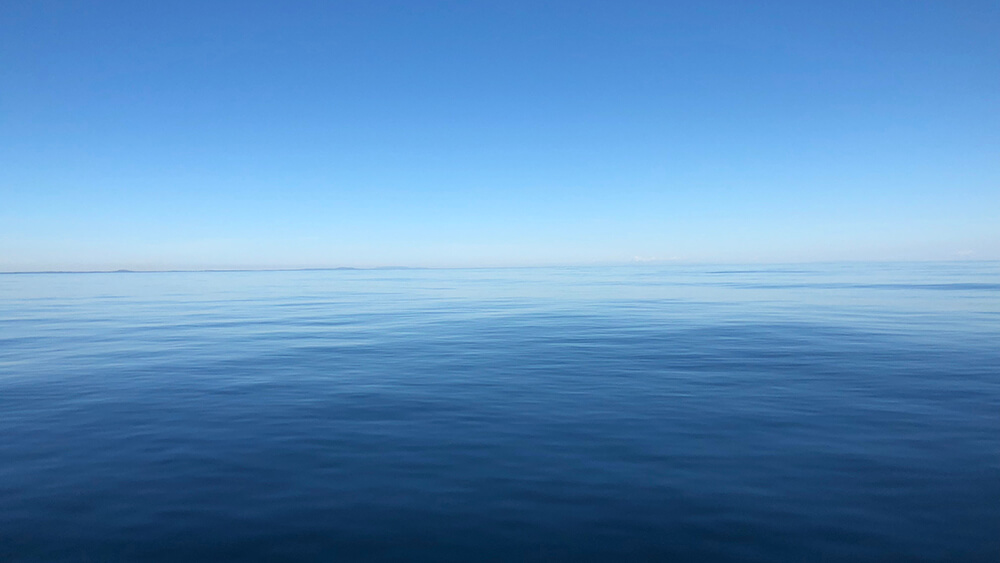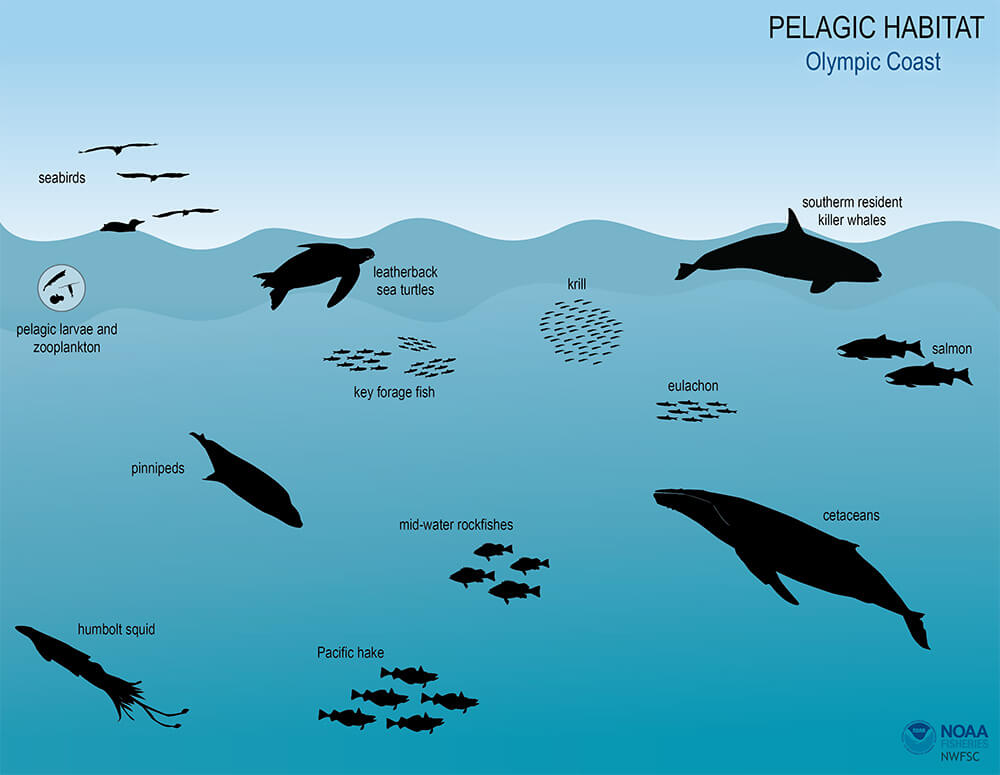Open Ocean

Open ocean or ‘pelagic’ habitat covers most of the planet and is the largest habitat type on Earth. Extending from the sea surface to near the seafloor, pelagic habitats support a vast diversity of species—from tiny plankton to blue whales—that depend on the ocean for food, movement, communication, and other essential functions. Many species that are important to open ocean ecosystems, such as humpback whales and albatross, are seasonal visitors to the Olympic Coast, traveling great distances each year to feast on the productivity of this special place during the upwelling season.
Click on the illustration below to access user-friendly, online tools that allow resource managers, scientists, educators, students, and the public to explore, discover, and summarize ecosystem trends at the sanctuary.


